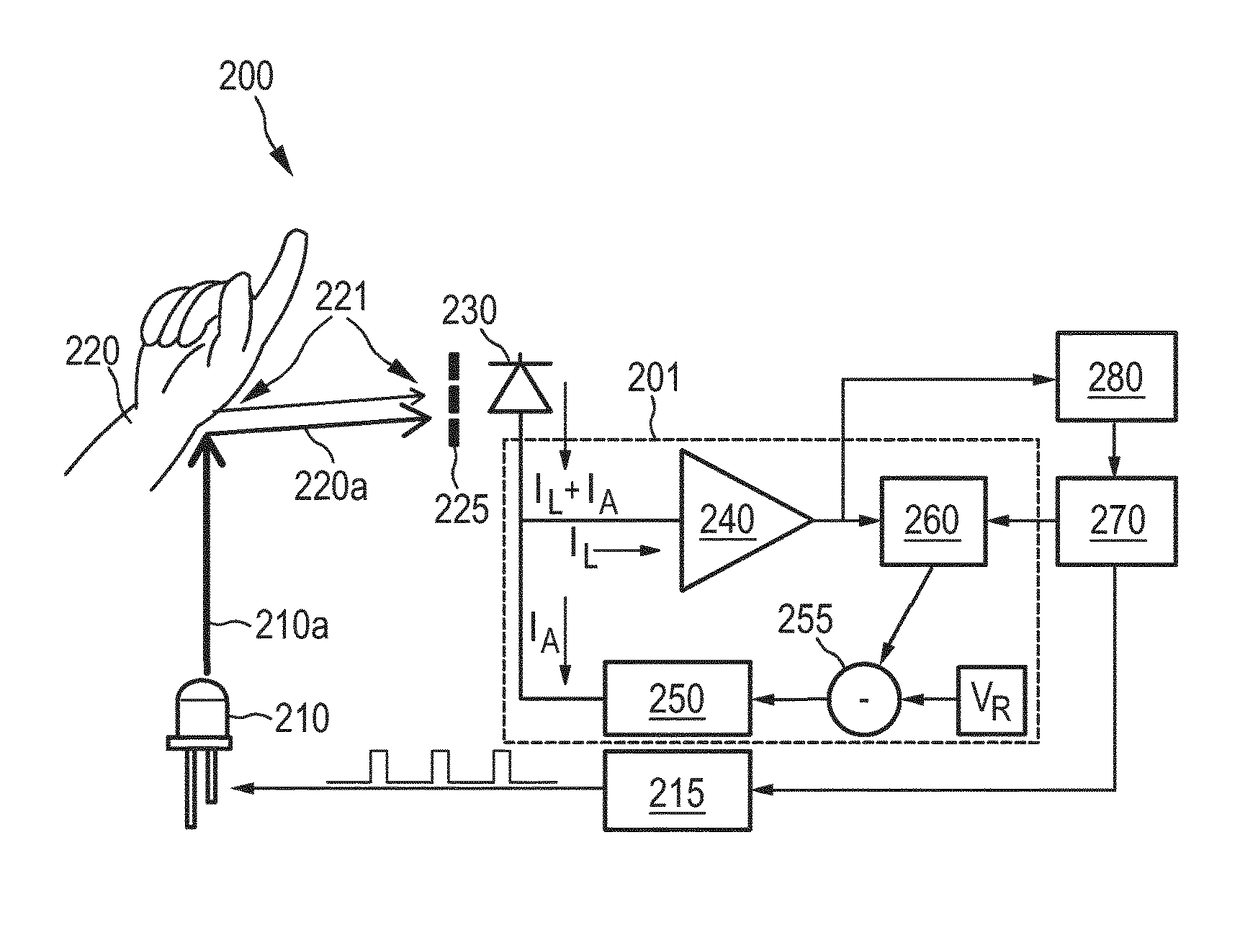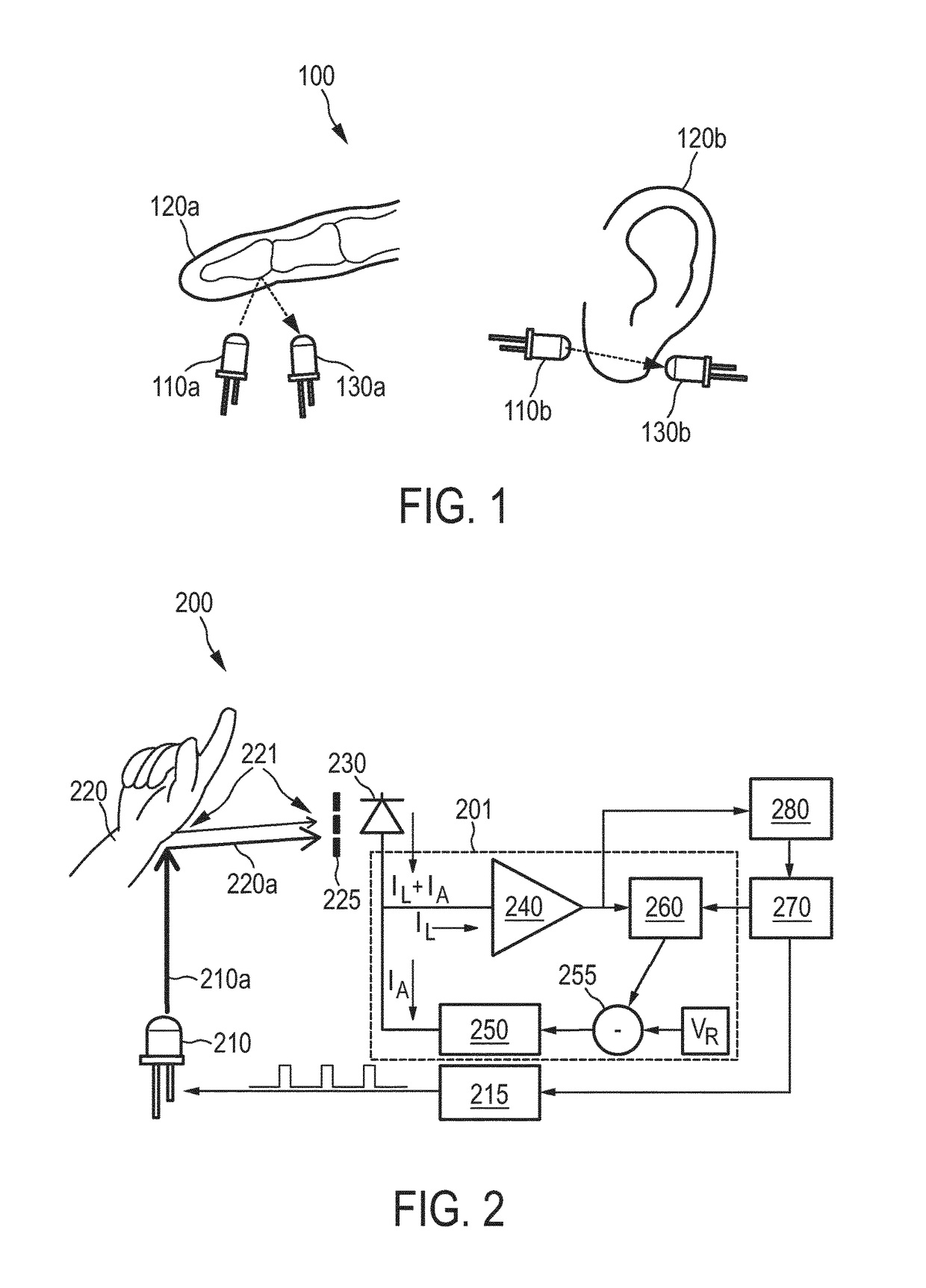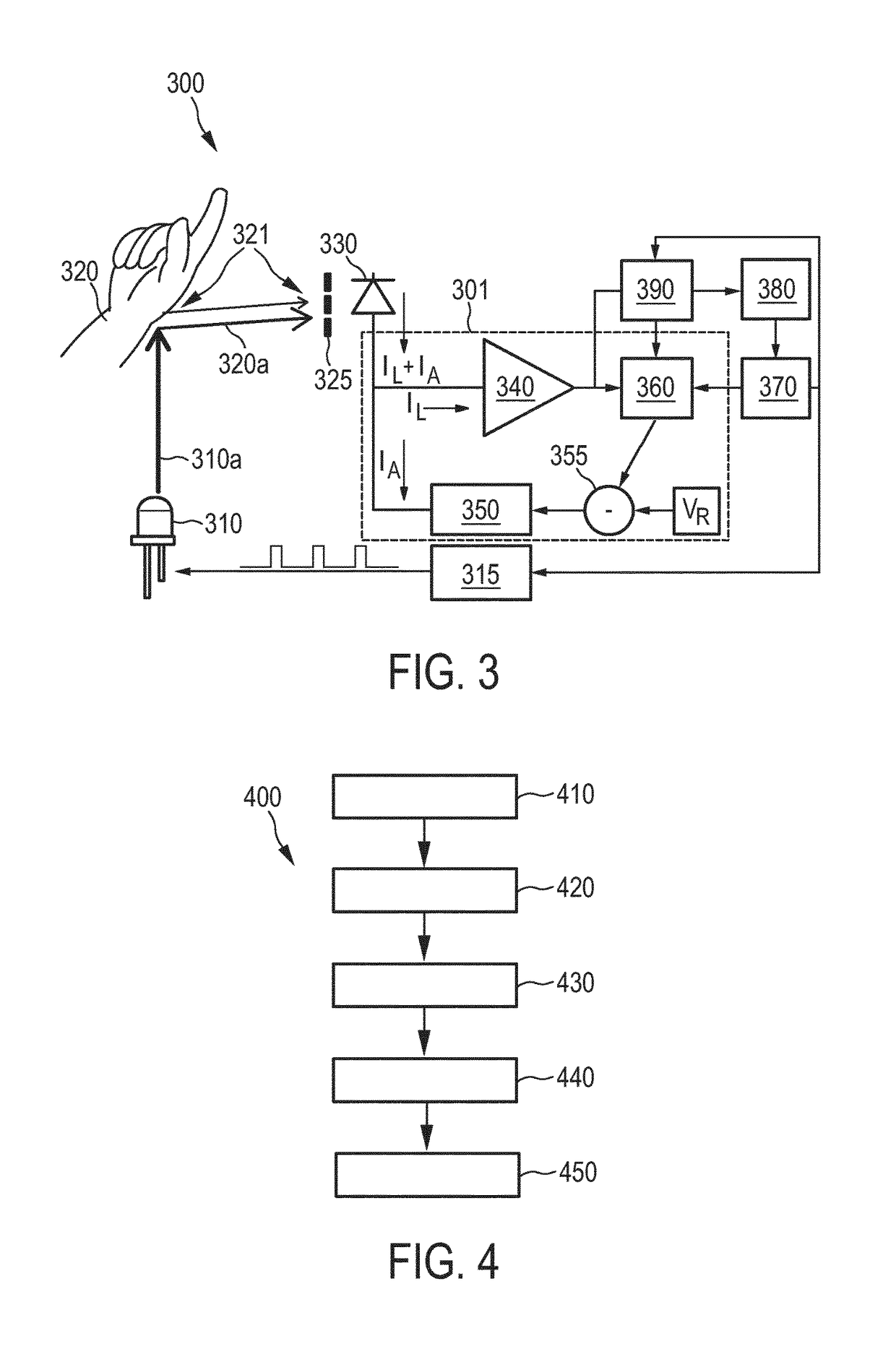Photoplethysmography sensor apparatus and method
a sensor and photoplethysmography technology, applied in the field of photoplethysmography sensor apparatus, photoplethysmography sensor method, and photo, can solve the problems of inability to achieve track-and-hold topology, less suited to ambient light of ‘ac kind’, etc., and achieve the effect of saving battery power and saving costs and/or spa
- Summary
- Abstract
- Description
- Claims
- Application Information
AI Technical Summary
Benefits of technology
Problems solved by technology
Method used
Image
Examples
Embodiment Construction
[0045]The present invention relates to a photoplethysmography sensor apparatus, a photoplethysmography sensor method, and a photoplethysmography sensor computer program. It is proposed to measure a photoplethysmographic signal without ambient light interference. Ambient light signals are rejected by subtraction of a compensation current at the input of a transimpedance amplifier. The compensation current is controlled via a closed loop, without interfering with the low duty cycle operation of a photoplethysmography LED.
[0046]FIG. 1 illustrates the basic principle of PPG. PPG refers to acquiring a volumetric organ measurement by optical means. In example 100 shown in FIG. 1, a light-emitting diode 110a outputs light towards a human finger 120a. The light is partly absorbed and partly reflected by finger 120a. Reflected light is observed by photo diode or transistor 130a. Further, in example 100, a light-emitting diode 110b outputs light towards a human earlobe 120b. The light is part...
PUM
 Login to View More
Login to View More Abstract
Description
Claims
Application Information
 Login to View More
Login to View More - R&D
- Intellectual Property
- Life Sciences
- Materials
- Tech Scout
- Unparalleled Data Quality
- Higher Quality Content
- 60% Fewer Hallucinations
Browse by: Latest US Patents, China's latest patents, Technical Efficacy Thesaurus, Application Domain, Technology Topic, Popular Technical Reports.
© 2025 PatSnap. All rights reserved.Legal|Privacy policy|Modern Slavery Act Transparency Statement|Sitemap|About US| Contact US: help@patsnap.com



